Scout your soybeans for pest, disease issues
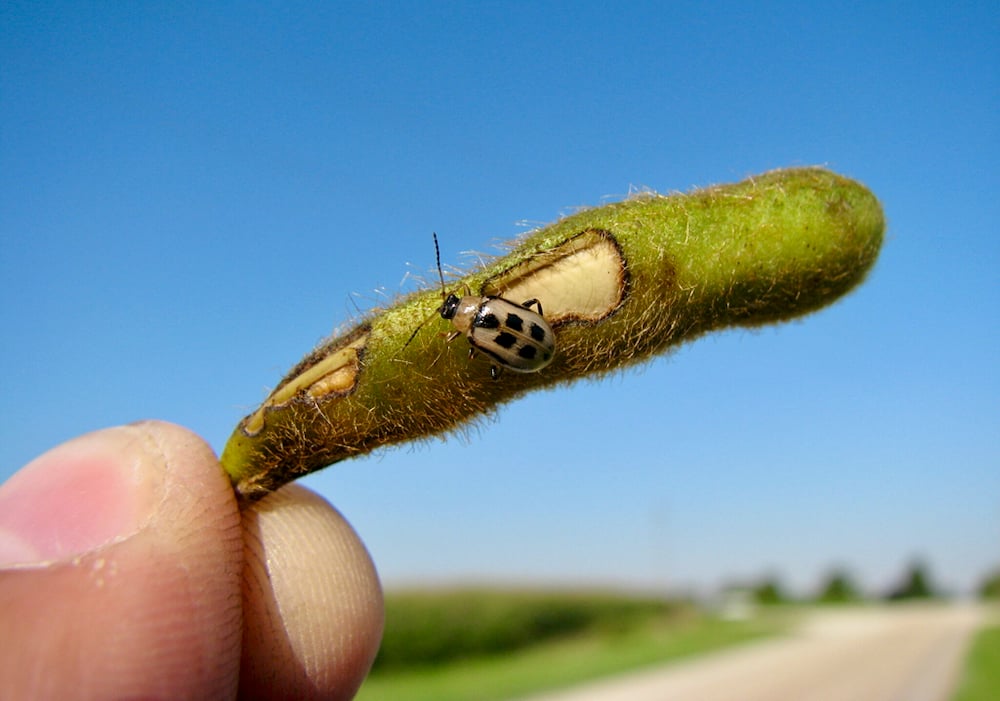
August is the most critical month for soybean growth, development, and setting final yield. It’s important to scout fields to assess production issues and take control measures if necessary to maximize yield potential.
Read Also
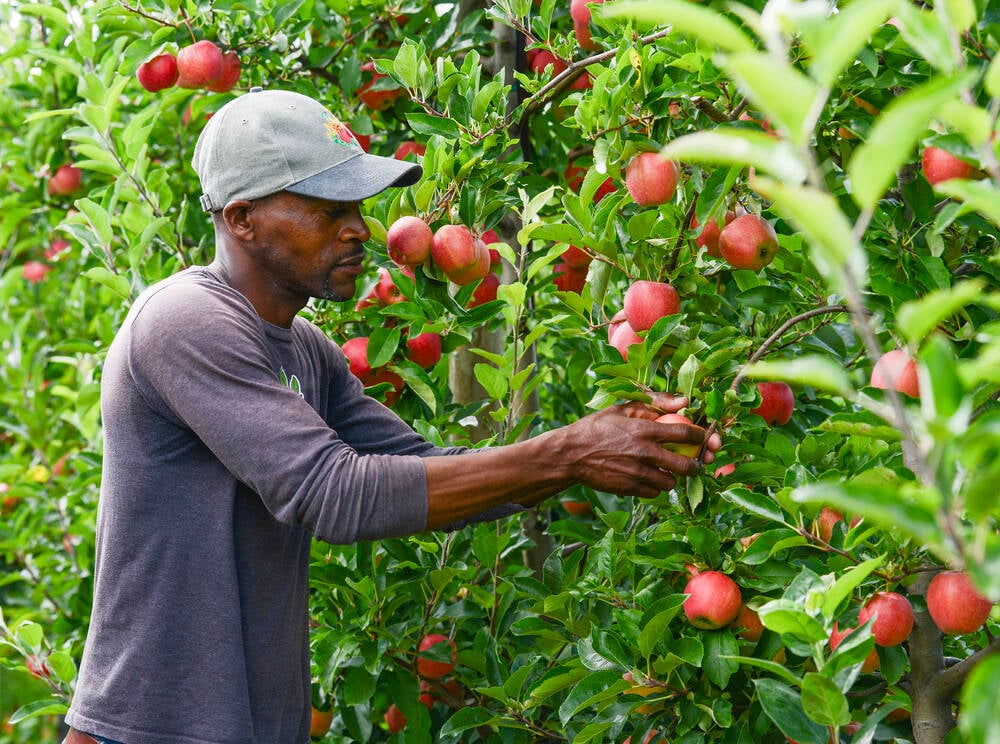

Feds add stringent measures to discourage temporary foreign worker reliance
The federal government is changing Canada’s temporary foreign worker programs to reduce the use of migrant workers in Canada. That could affect the agriculture sector, though it’s not a direct target of the reforms.
Bean leaf beetles
Bean leaf beetles feed on leaves and the surface of the pod, leaving only a thin film of tissue to protect the seeds within the pod (Figure 1 at top). These pod lesions increase the pod’s susceptibility to secondary diseases such as alternaria. Pods may also be clipped off the plant. Pod feeding is especially problematic for IP growers as seed quality can be greatly reduced.
Beetles are also a vector of bean pod mottle virus. The virus causes the plant and seed to become wrinkled and mottled, reducing the quality of the seed. From R4 to early R6 stages, if 10% of pods have feeding injury and the beetles are still active in the field, a spray is warranted. Days-to-harvest intervals should be considered before spraying.
The way to distinguish a BLB from other insects is by the small black triangle behind the head. Bean leaf beetle adults vary in colour, but always have a small black triangle visible behind the head. More information can be found in the Ontario CropIPM.
White mould
A small amount of white mould can quickly increase to a devastating outbreak under the right conditions for the disease. White mould prefers cool wet conditions so crops with a big canopy are more at risk. White mould survives in the soil and crop residue in overwintering bodies called sclerotia. They are roughly the same size as soybean seed and will cause downgrading of the harvested seed if they are found in large quantities in the sample (Figure 2 below).
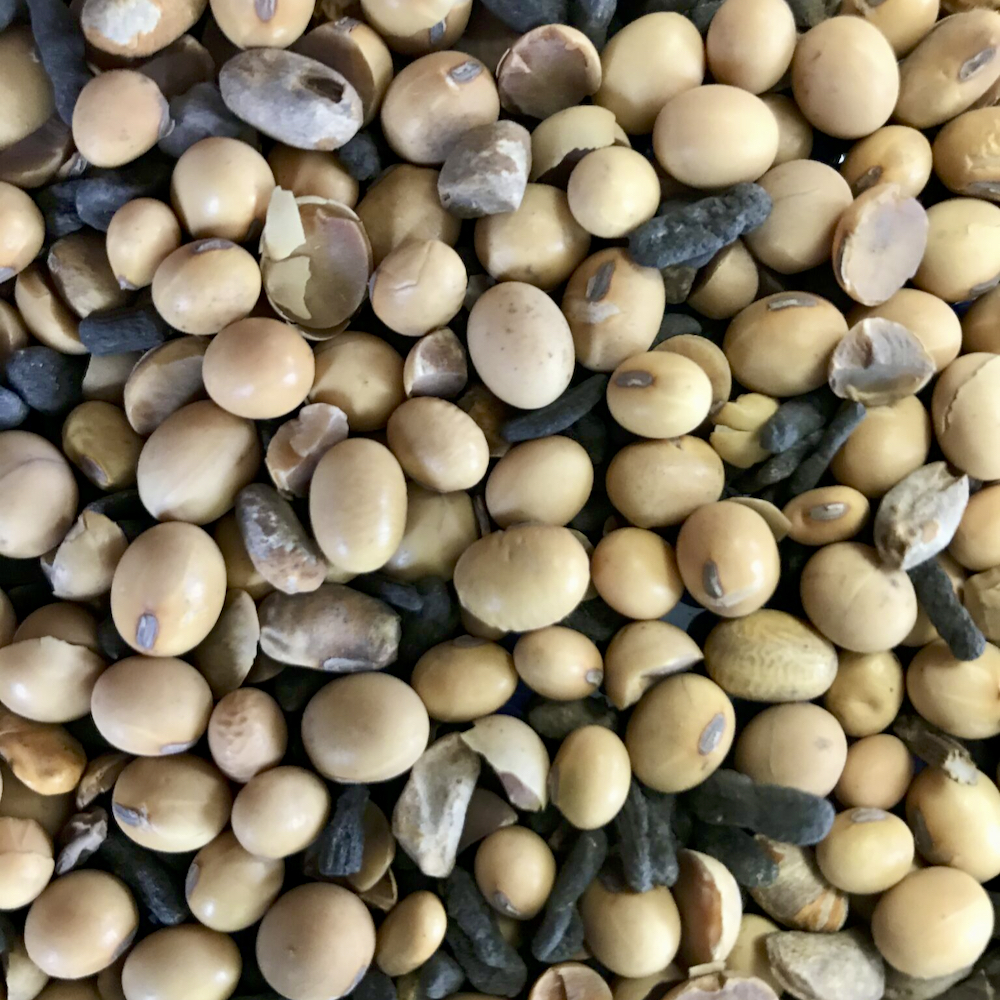

photo:
Source: Horst Bohner, OMAFA
Planning ahead for disease management is important to keep this disease in check. Lower plant populations and wide rows can be important strategies to dry out the canopy to reduce white mould severity. If plants lodge the field is particularly susceptible to white mould. Another important factor is that tillage leads to more white mould compared to no-till. In fact, the initial widespread adoption of no-till soybeans was partly due to the observed reduction in white mould in no-till. In no-till the sclerotia are also left on the soil surface to die out so they cannot infect the next susceptible crop.
Foliar fungicides must be applied relatively early in the plants reproductive growth stages to protect the flowers since this is where disease infection occurs. Spraying during the second half of August when plants are at the R5 – R6 growth stage will not control white mould.
Two spotted spider mites
Spider mites proliferate quickly in hot dry conditions and are most noticeable on drought stressed crops but can also multiply in fields stressed for other reasons. They are causing damage this year in some fields. They move to soybeans after wheat harvest or from weeds adjacent to the field. Mites start off on the edge of the field and will then be blown across the entire field. Spider mites are tiny, about 0.5 to 1.0 mm long so a hand lens is required to see them clearly (Figure 3 below). The easiest way to identify mites is to shake affected leaves over a white piece of paper. The mites will fall onto the paper and begin to crawl around making them easy to spot on the white surface. Mites prefer hot conditions, and their entire life cycle can be completed in as little as a week with many generations possible each year. Since females lay up to 200 eggs infestations can spread rapidly.
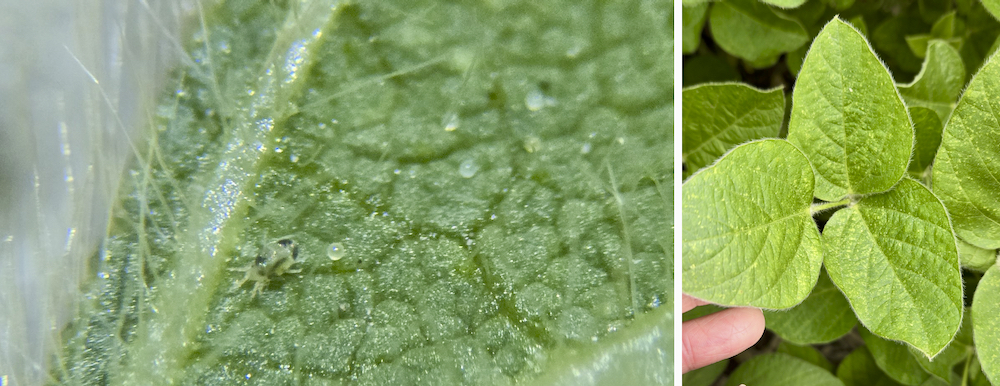

photo:
Source: Tracey Baute, OMAFA
Mites use their sucking mouthparts to extract sap from leaves. Damage is visible in the form of white stippling (dots) on the leaf (Figure 4 above). Leaves with heavy mite infestations turn yellow, curl, bronze and die. The underside of the leaves appear sand blasted. Some populations in Ontario are becoming tolerant to dimethoate (i.e., Cygon or Lagon) insecticide. If an insecticide application has been ineffective, contact Tracey Baute at OMAFA so that samples can be tested at Western University for resistance, as part of a GFO funding project.
Soybean aphids
Significant soybean aphid populations have been reported in Eastern Ontario (Figure 5 below). If more than 80 percent of plants have 250 aphids/plant and numbers are increasing a spray is warranted. This threshold is used for plants in the R1-R5 growth stage. Aphids can cause significant yield losses, especially if plants are under stress. If in doubt, use the free Aphid Advisor app to help decide if an application is required or take a wait and see approach based on weather forecasting and natural enemy feeding capacity.
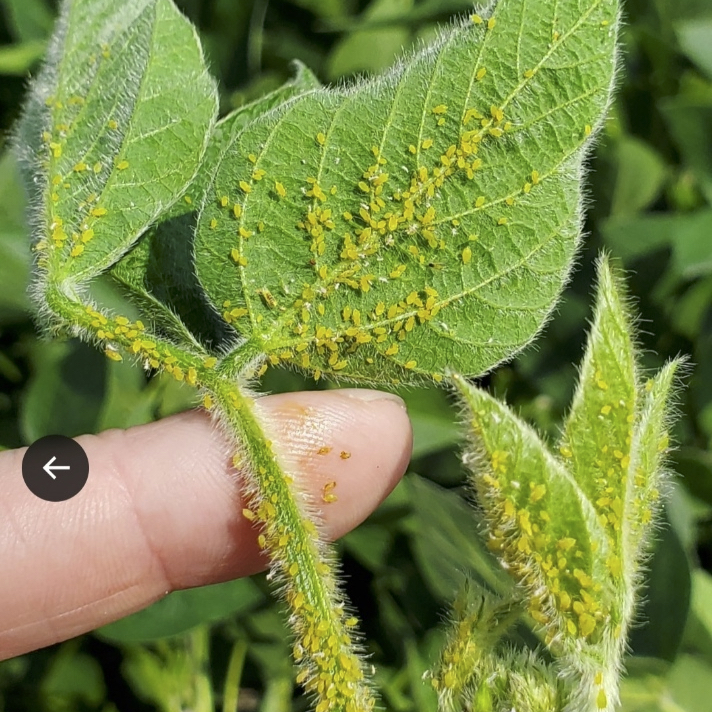

photo:
Source: Gilles Quesnel, Independent Certified Crop Advisor
– To read the full Ontario crop report for Aug. 8, visit the Field Crop News website.
Source: Farmtario.com

